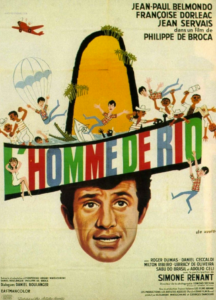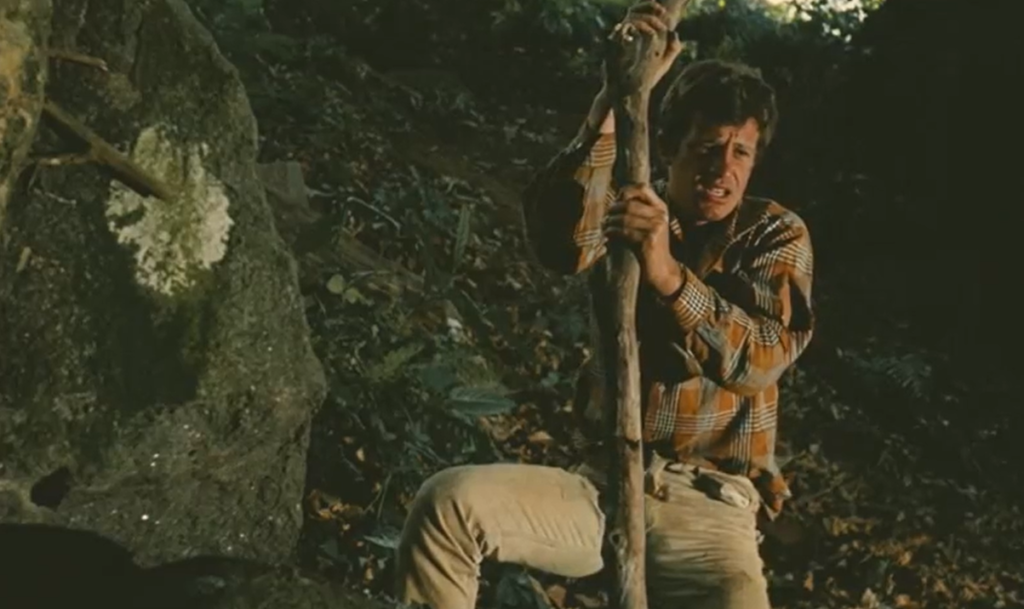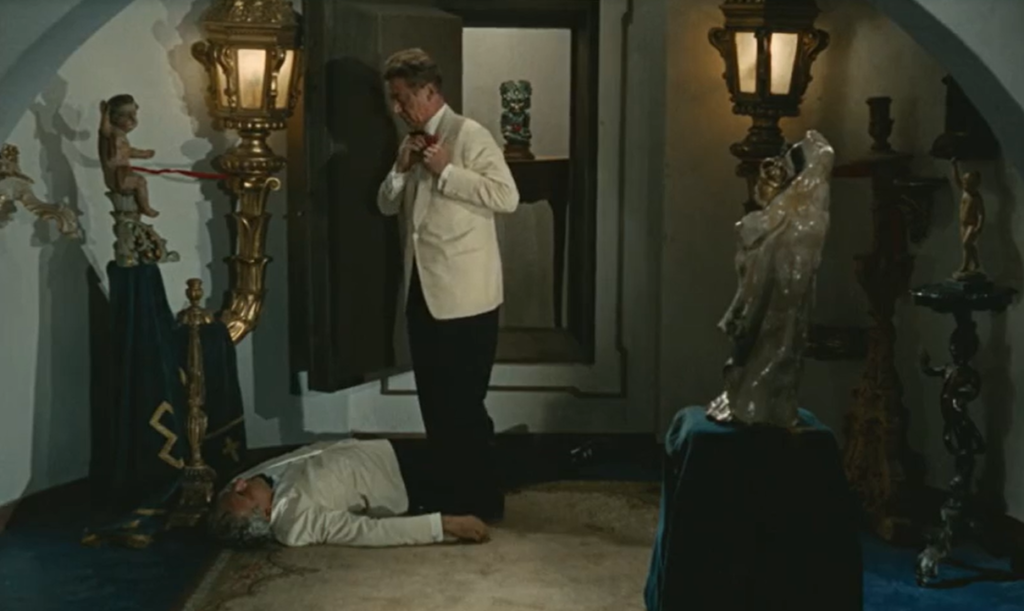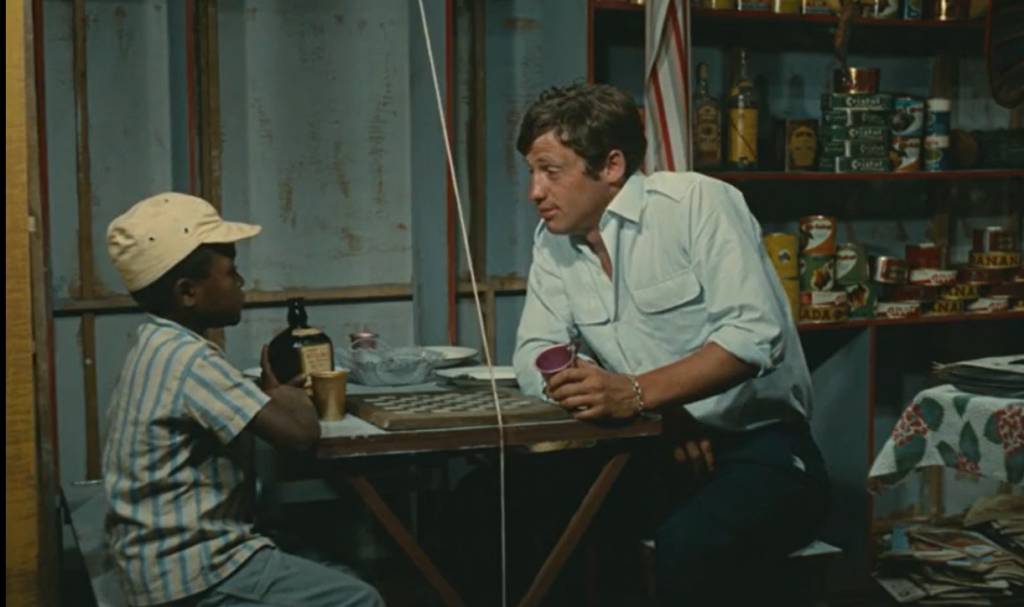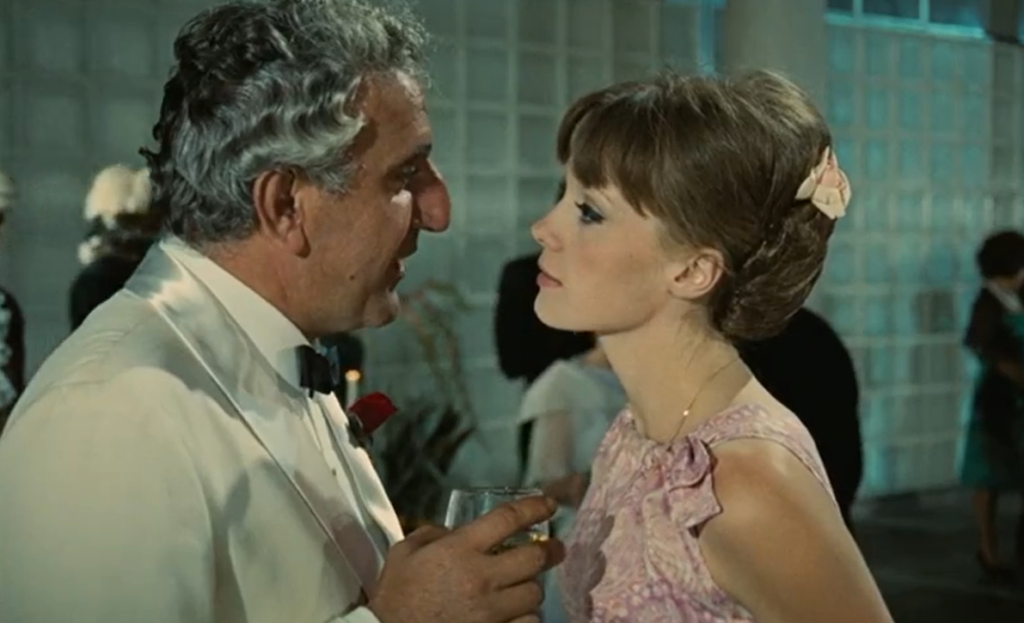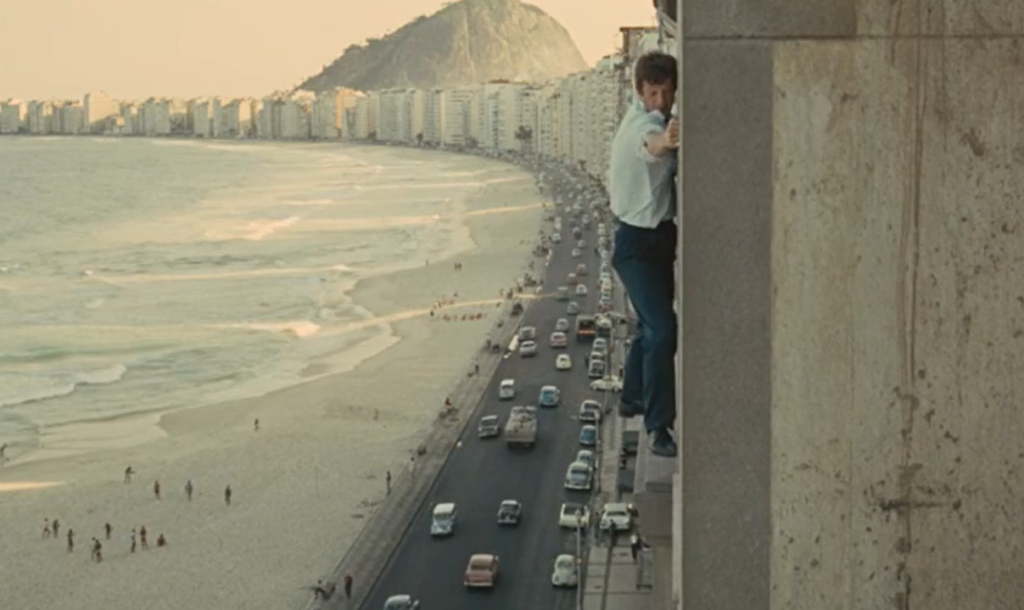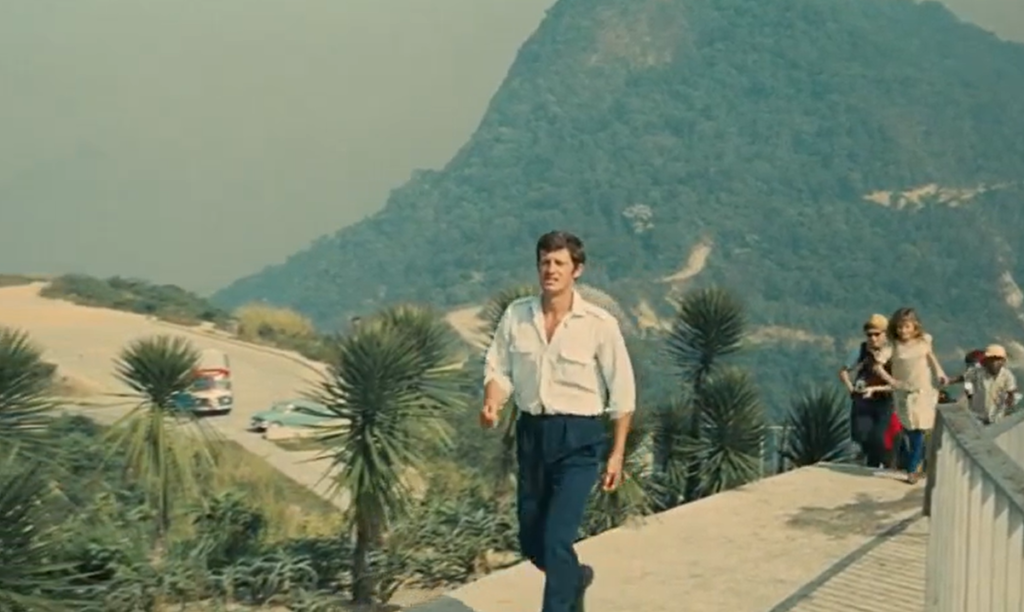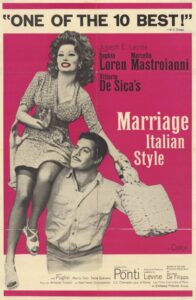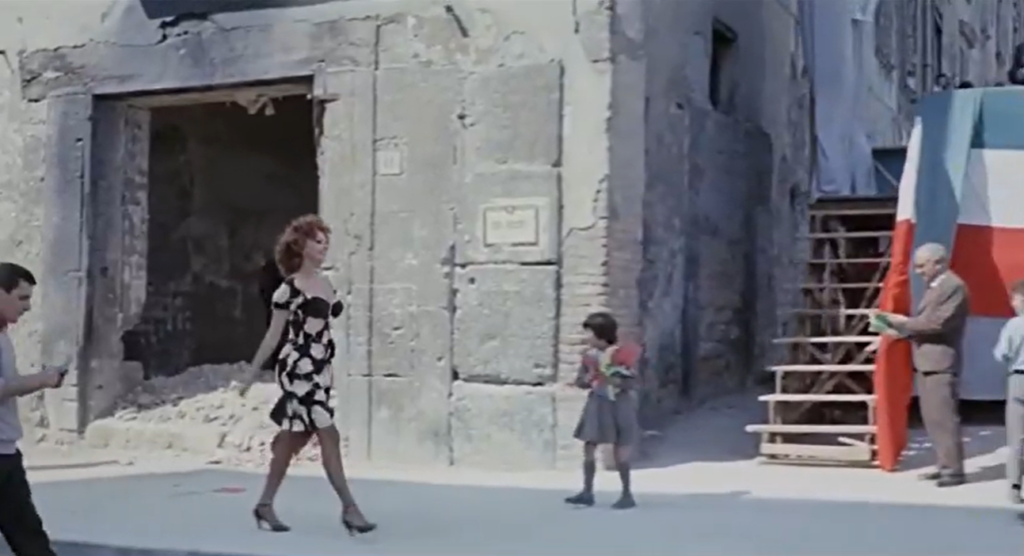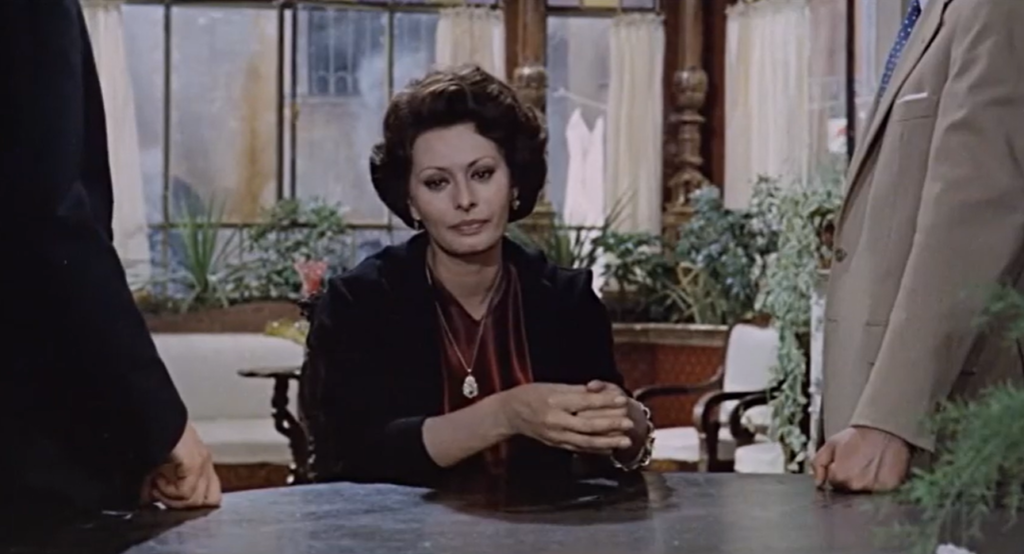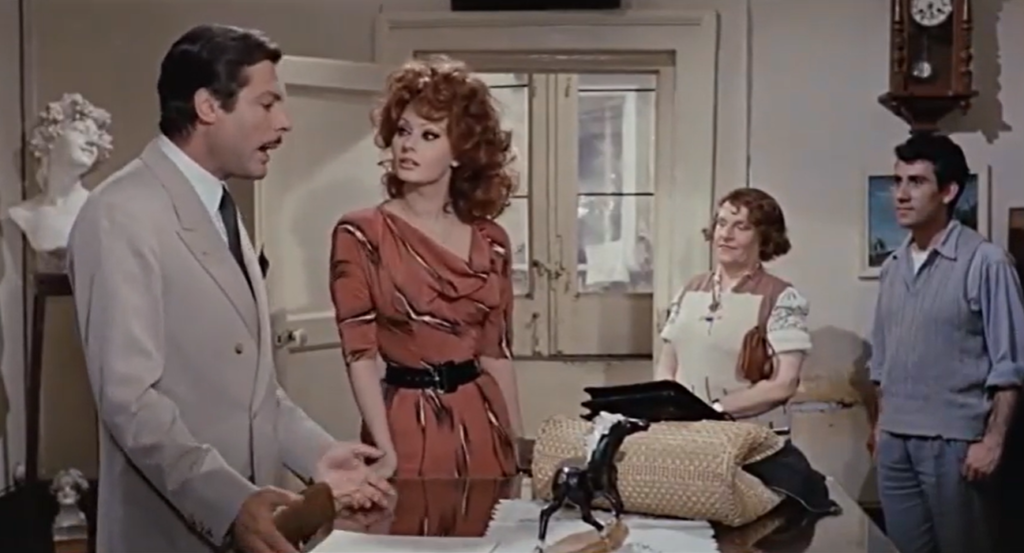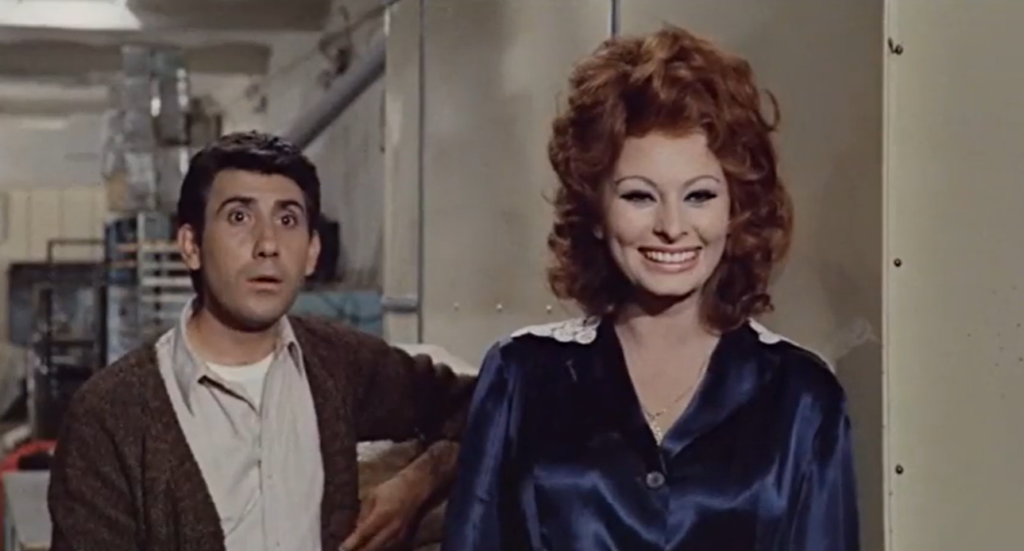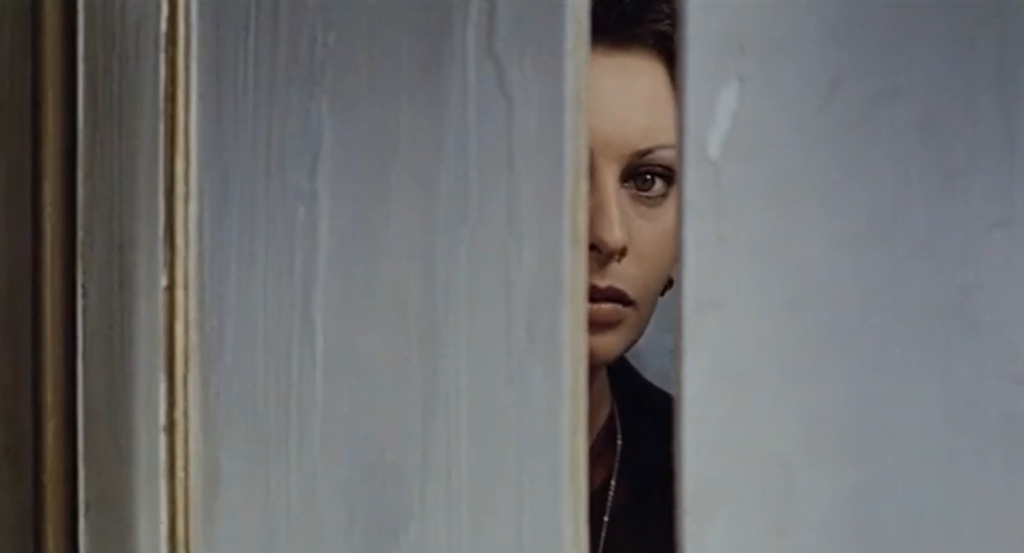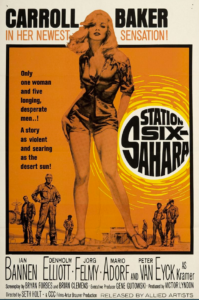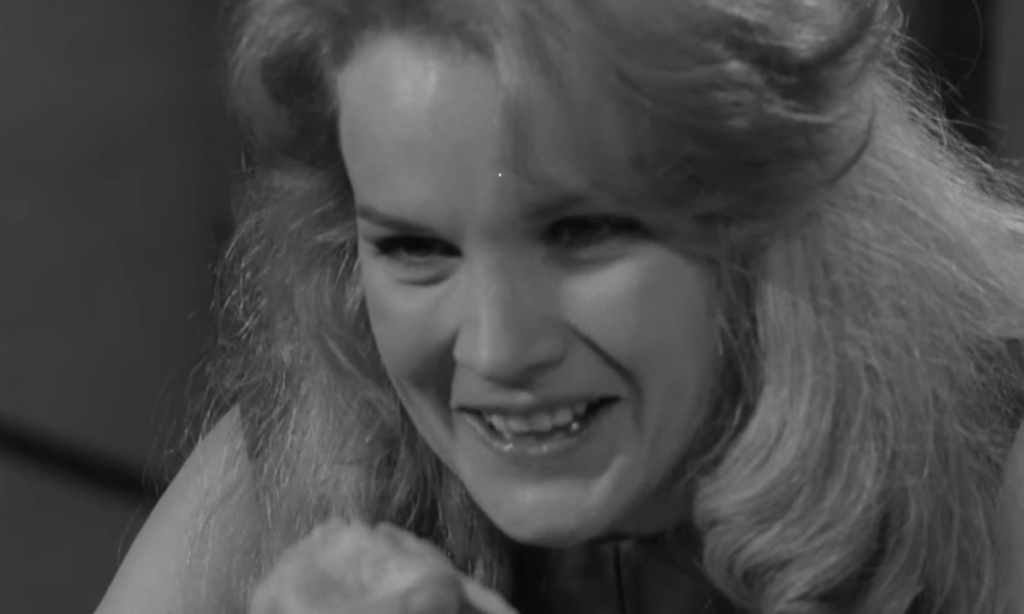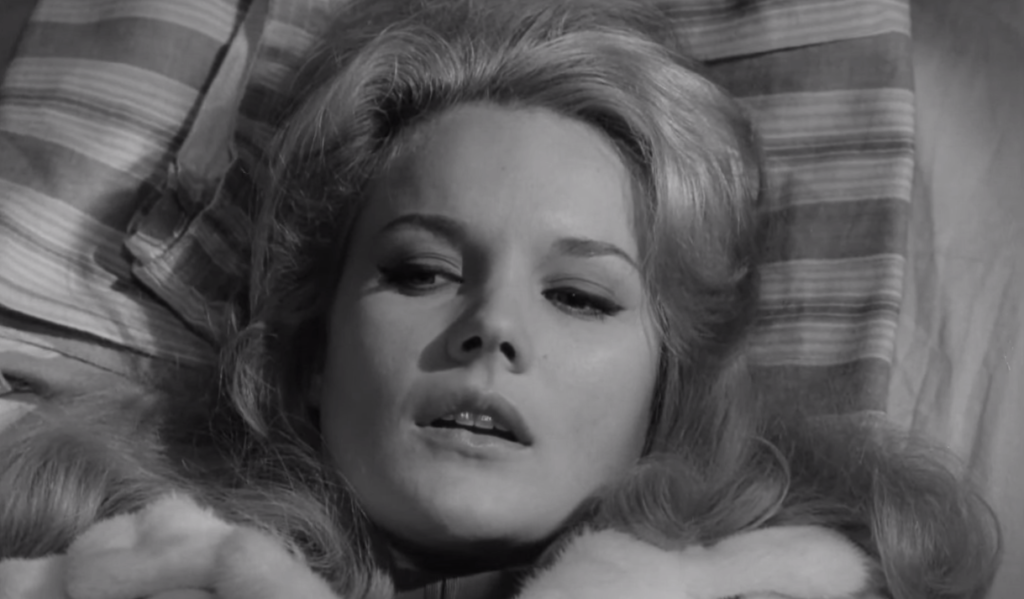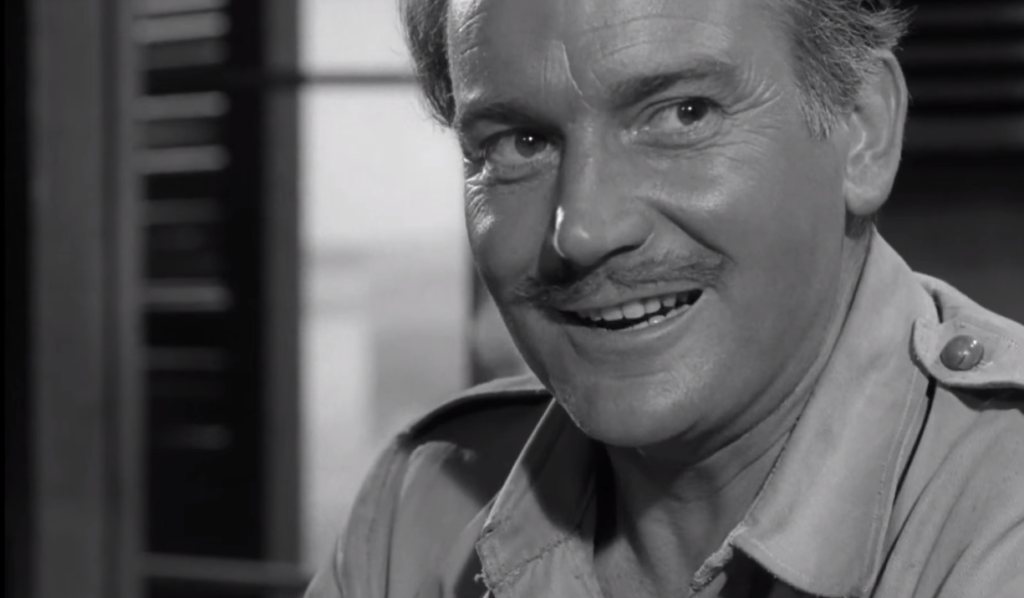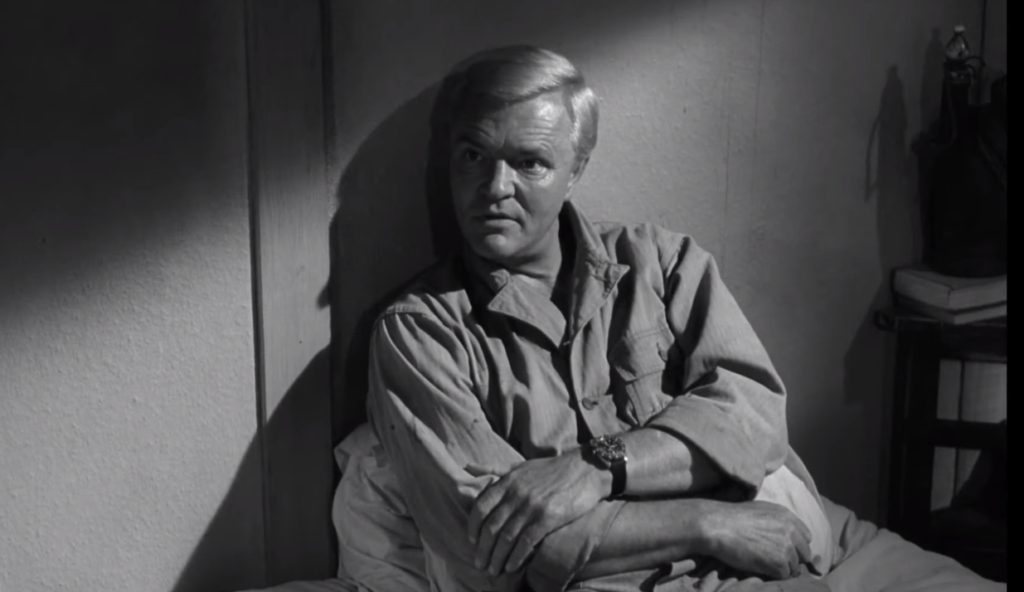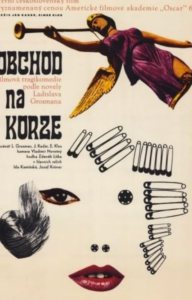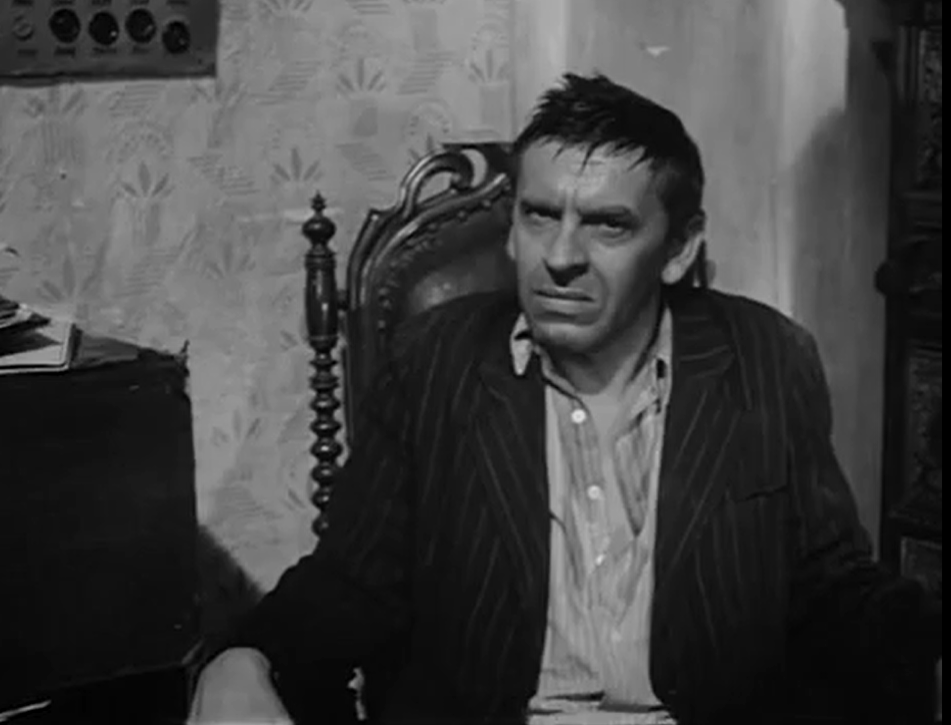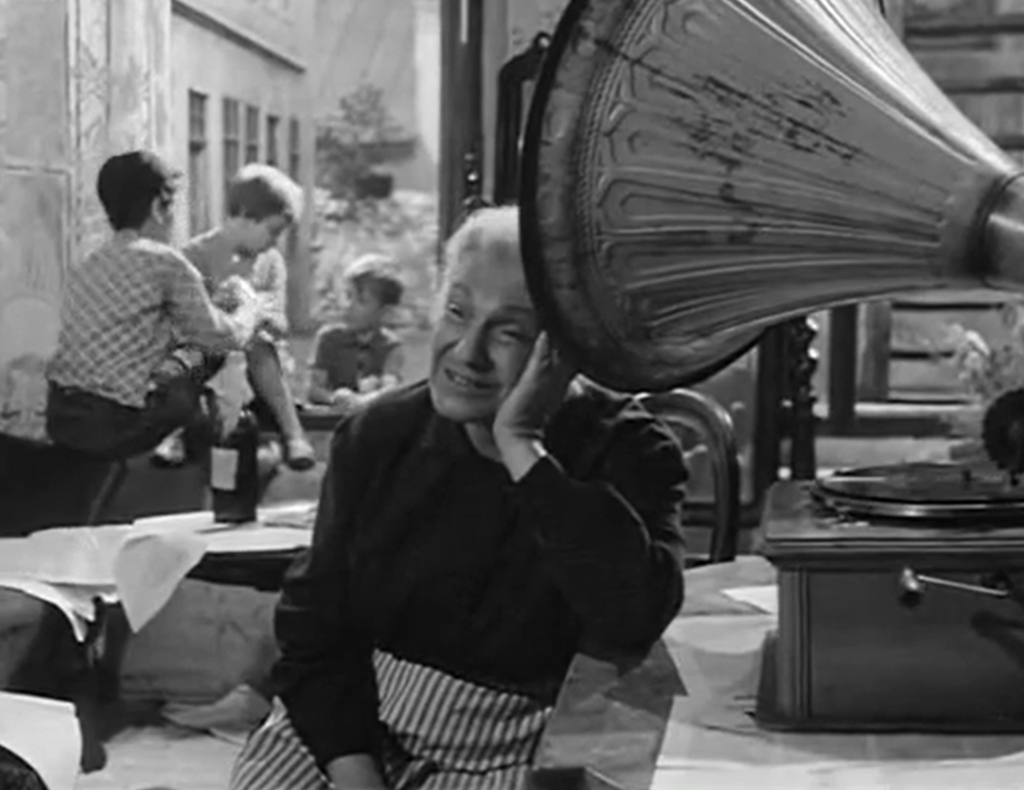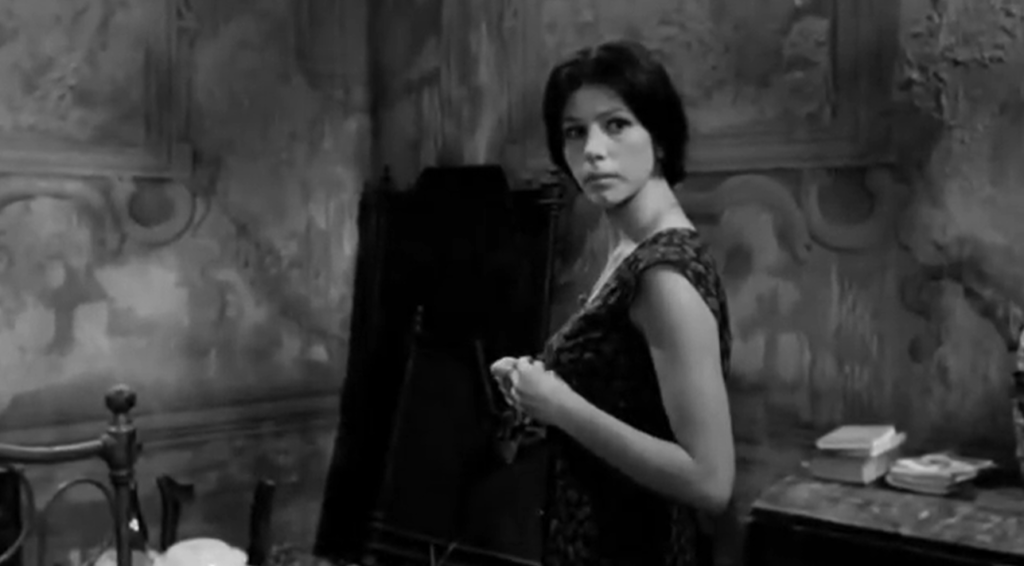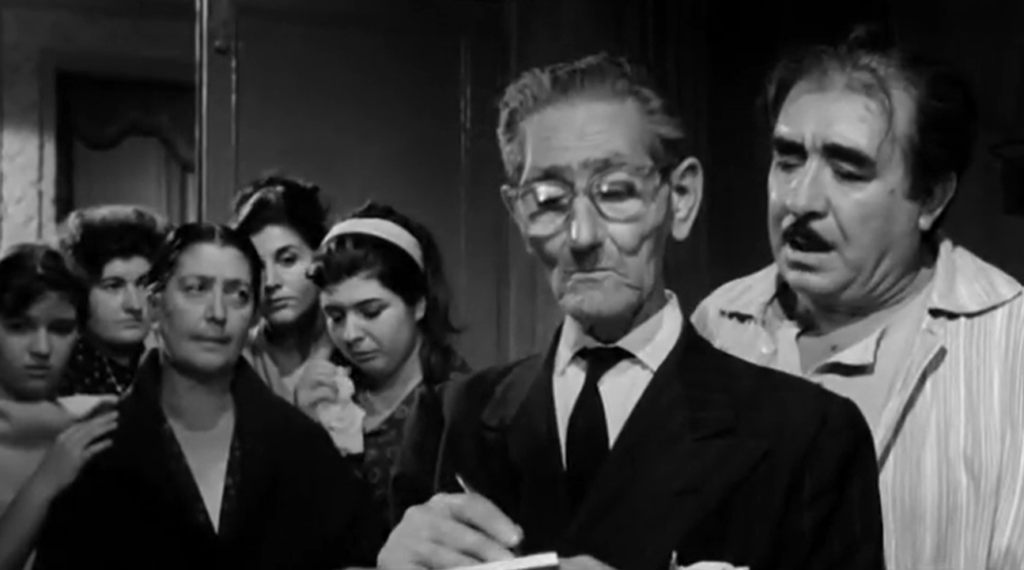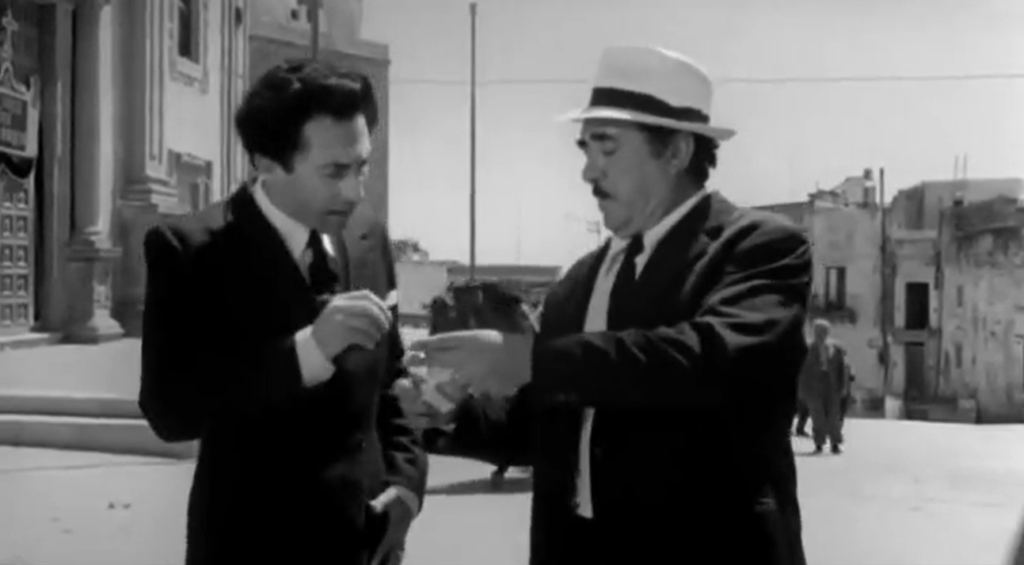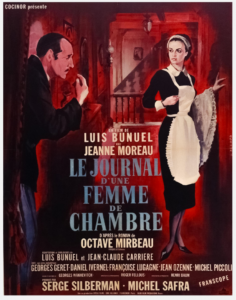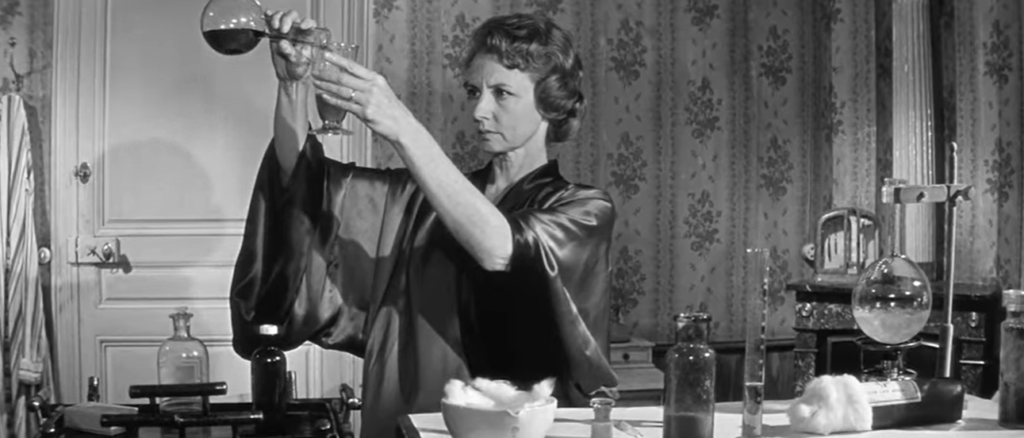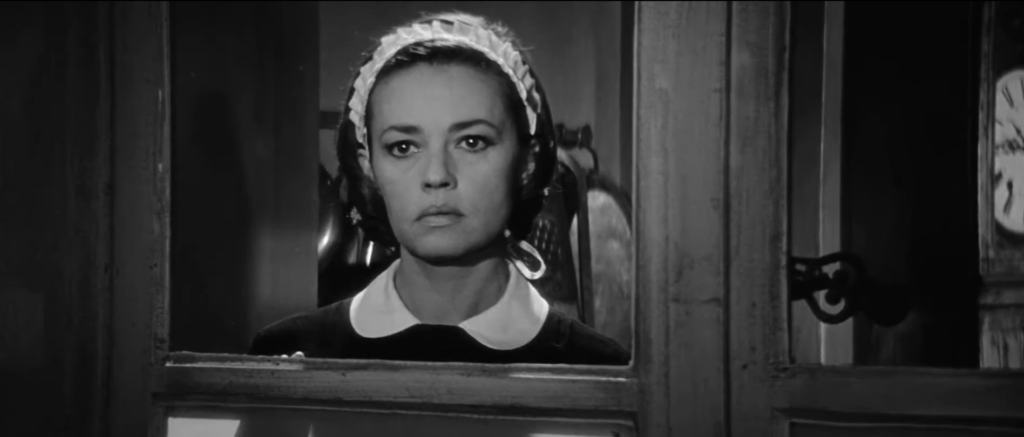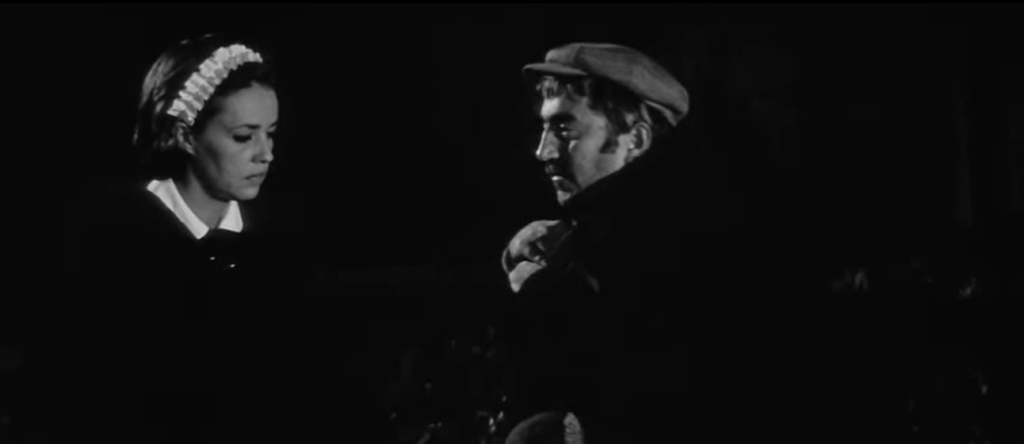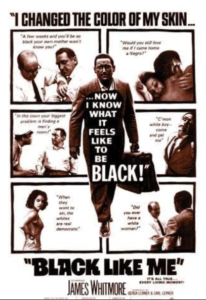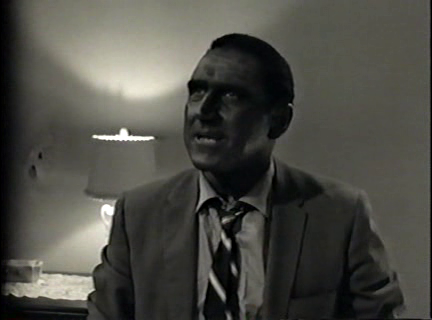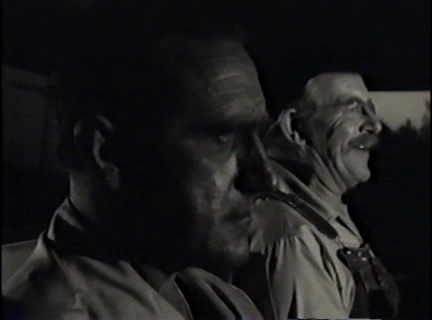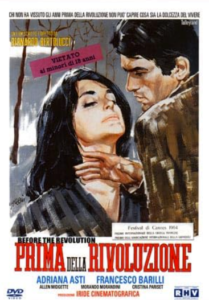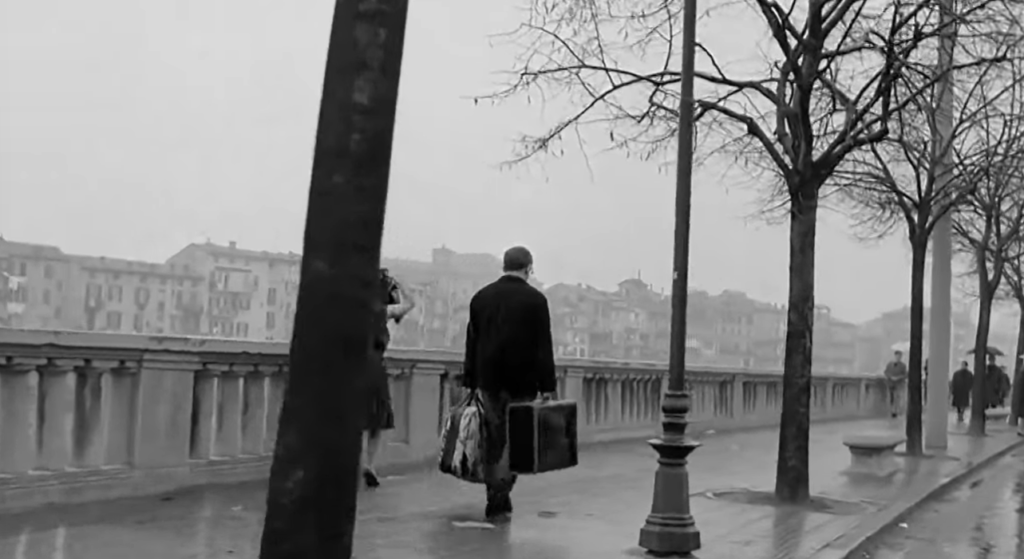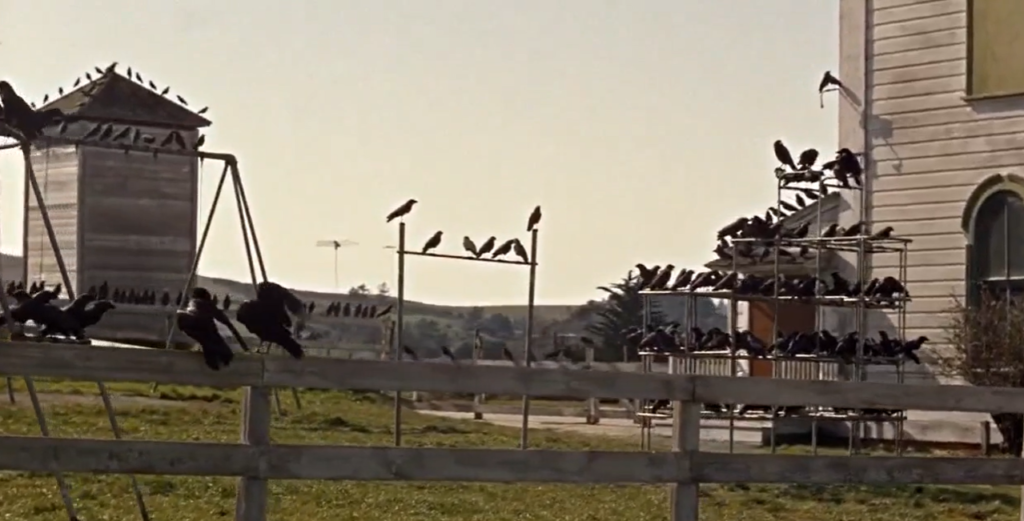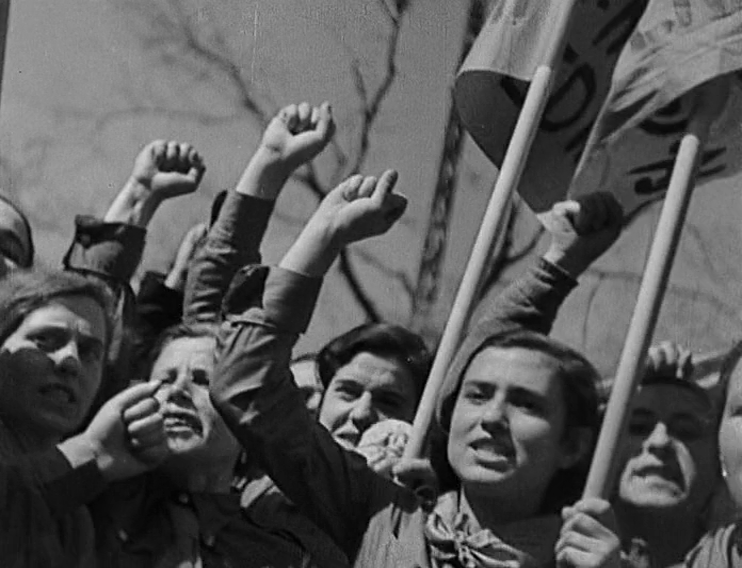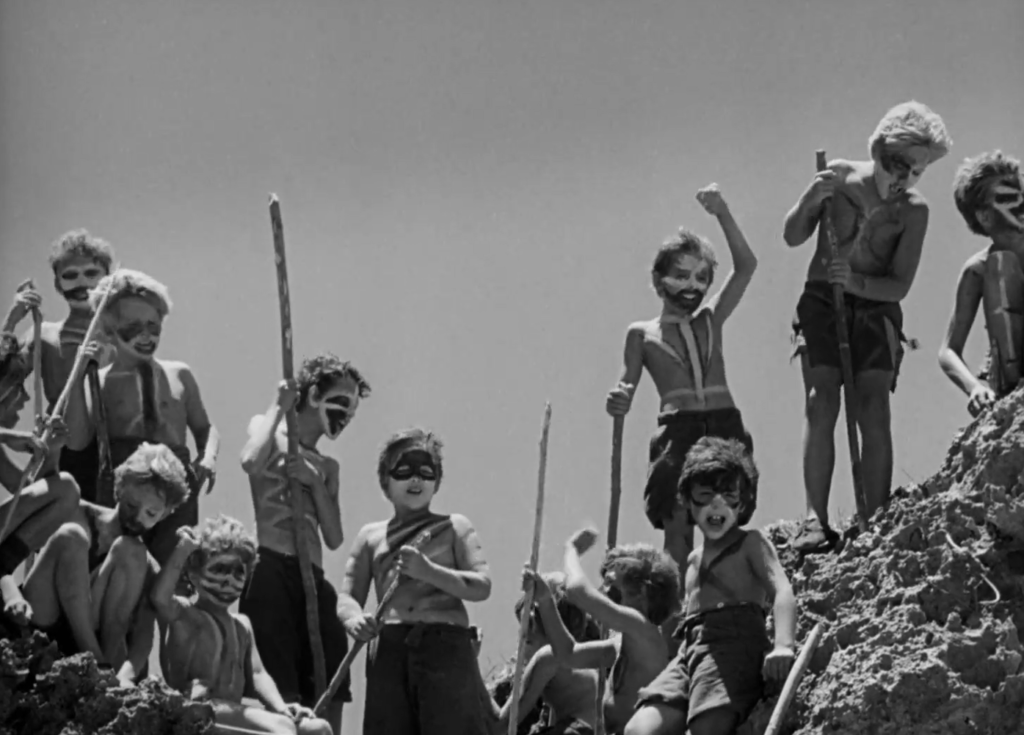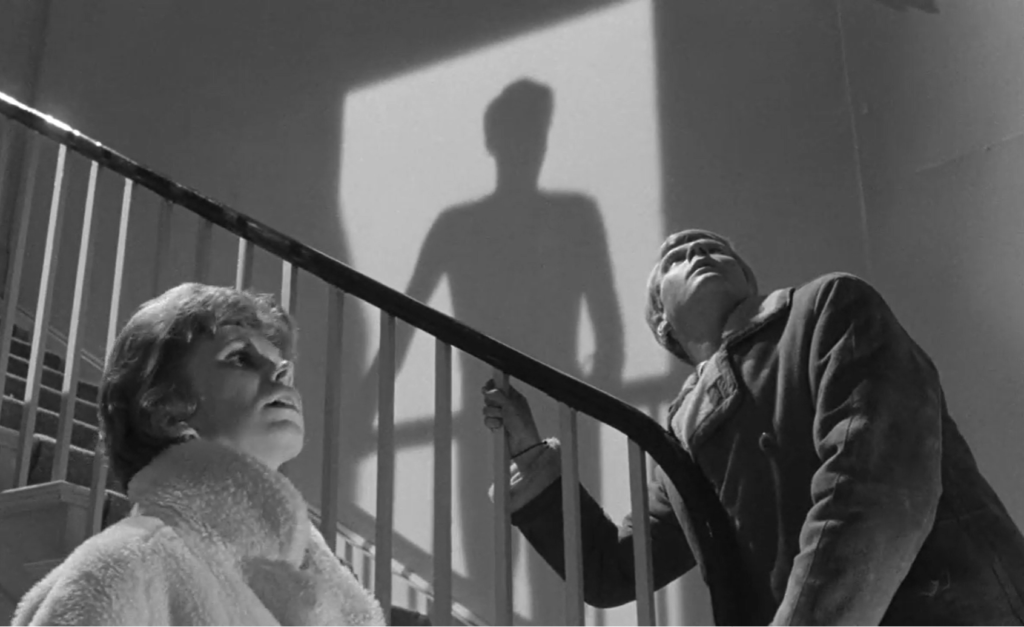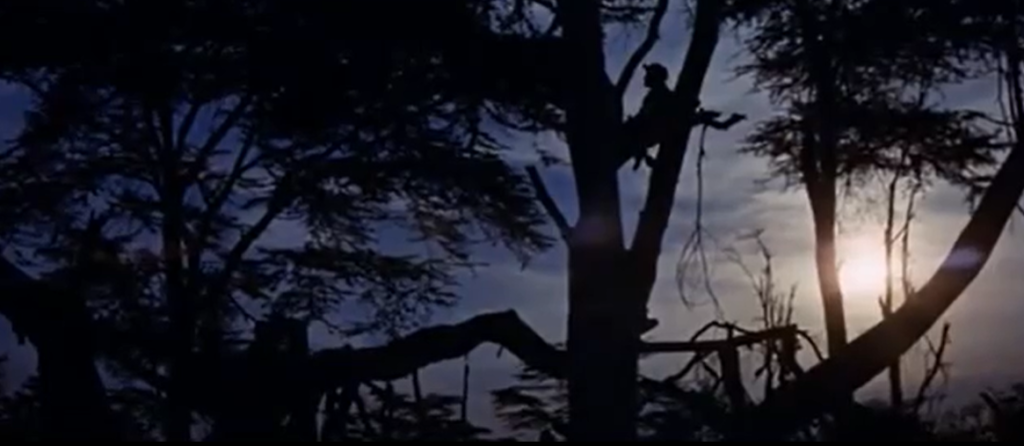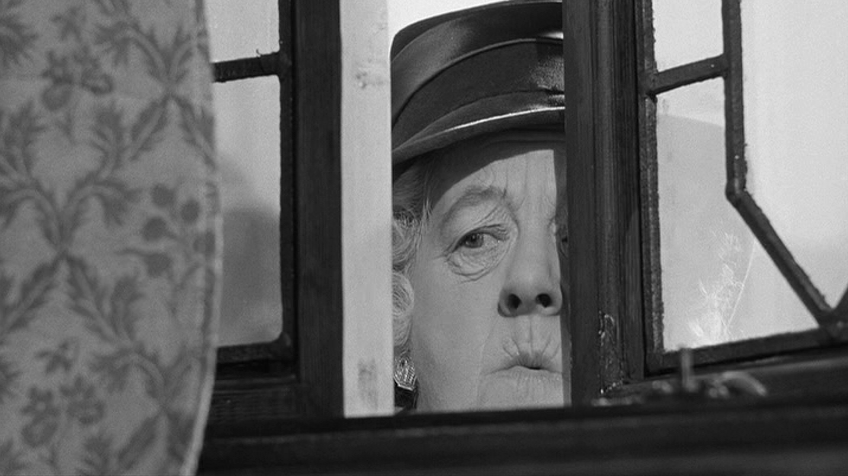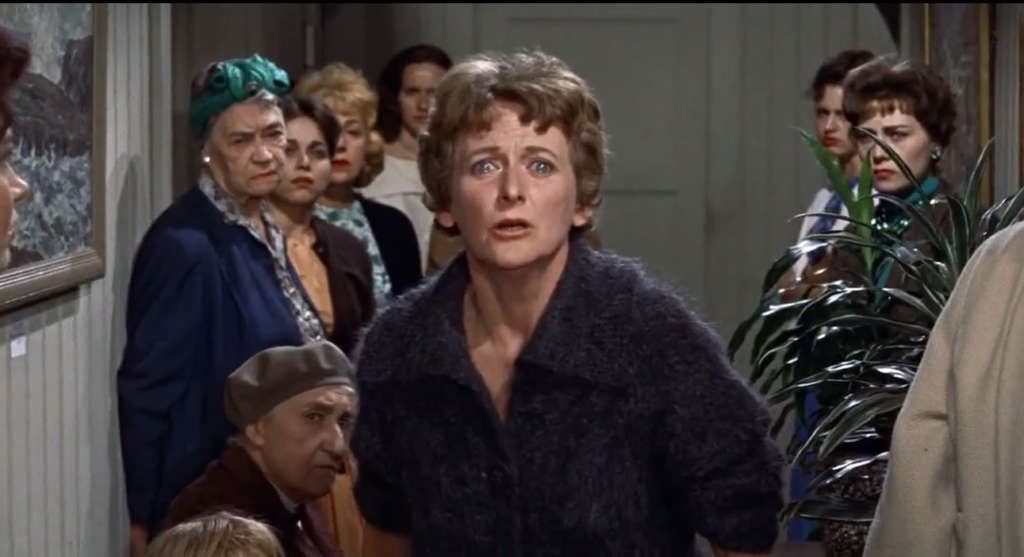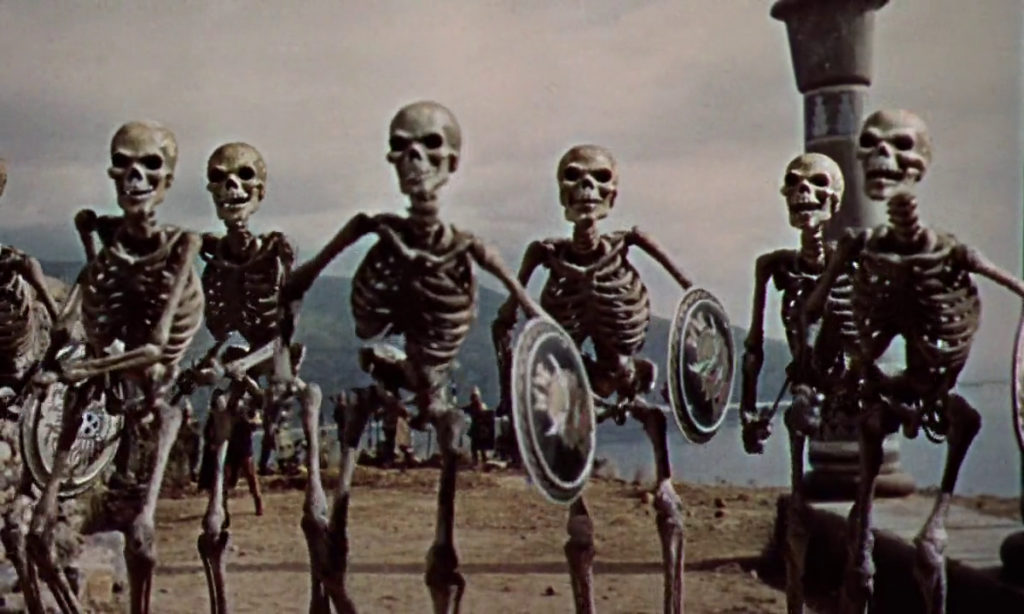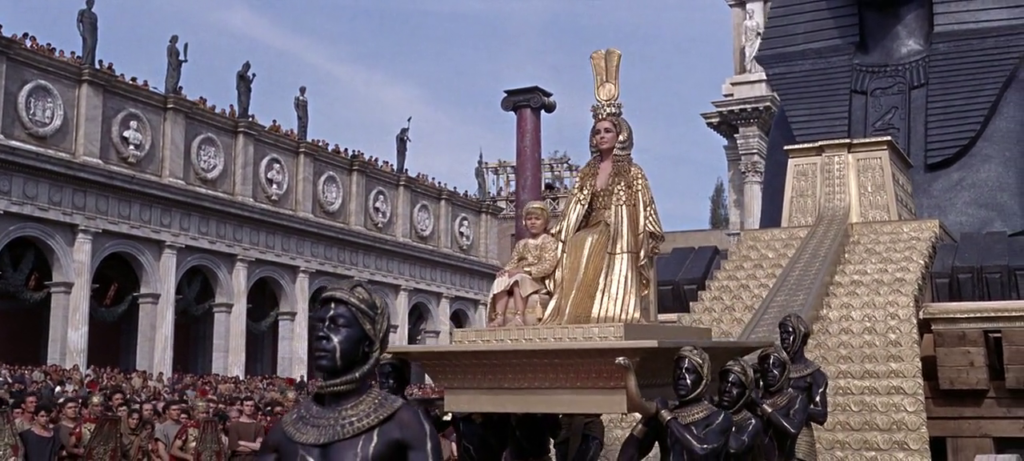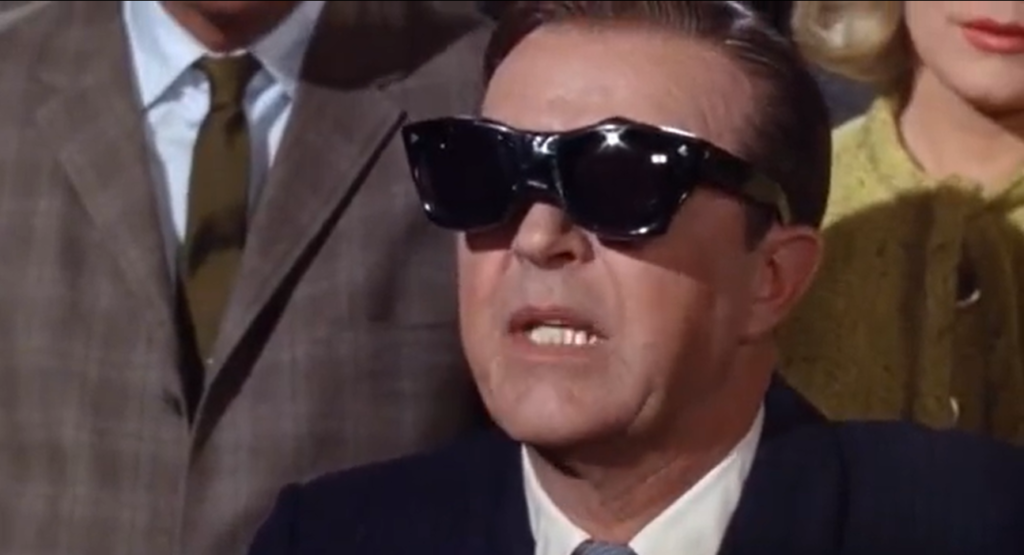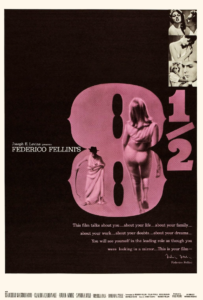|
Genres, Themes, Actors, and Directors:
- Anouk Aimee Films
- Barbara Steele Films
- Claudia Cardinale Films
- Directors
- Federico Fellini Films
- Italian Films
- Marcello Mastroianni Films
- Midlife Crisis
Review:
Fellini’s hyper-existential 8 1/2th film was made after his first six features — Variety Lights (1950) (which he co-directed — so, it counts for half), The White Sheik (1952), I Vitelloni (1953), La Strada (1954), The Swindle (1955) [not listed in Peary’s GFTFF], Nights of Cabiria (1957), and La Dolce Vita (1960), as well as segments of Love in the City (1953) and Boccaccio ’70 (1962) — and thus was named after its own numerical placement in his oeuvre. As Alexander Sesonke notes in his review for Criterion, “8 1/2 is a film about making a film, and the film that is being made is 8 1/2.” Precisely.

Given how intentionally self-absorbed this project ended up being, I was pleasantly surprised by how easily I got caught up in Mastroianni’s travails — unlike in the much bleaker La Dolce Vita (perhaps in part because Fellini kept a note to himself by his camera saying “Remember — this is a comedy.”). Fellini very effectively conveys what it’s like to be so famous and beloved for your craft that you’re literally swarmed by people wanting a piece of it (and you):
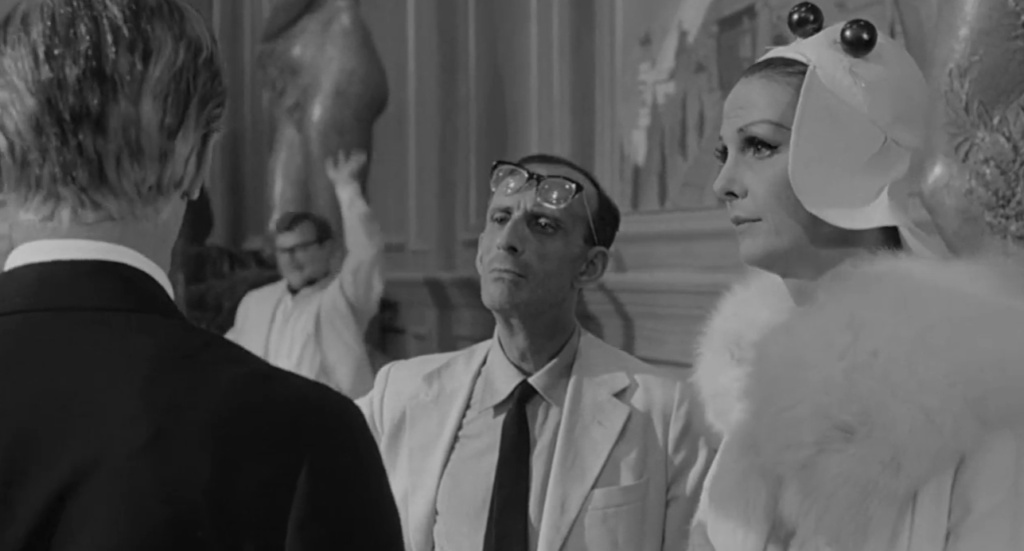
… as you’re simultaneously trying to manage an escapist affair, keeping your wife and producers happy (or not):

… and flashing back continuously on memories from your childhood.
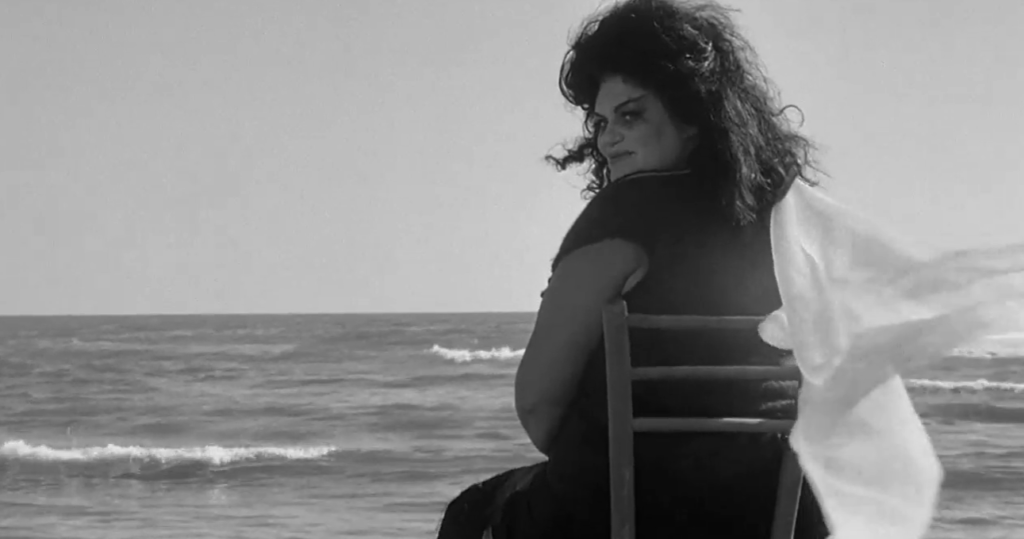
Fellini’s direction is seamlessly fluid, never giving us a moment’s pause before turning to the next distraction (much like his protagonist seems to feel at all times).
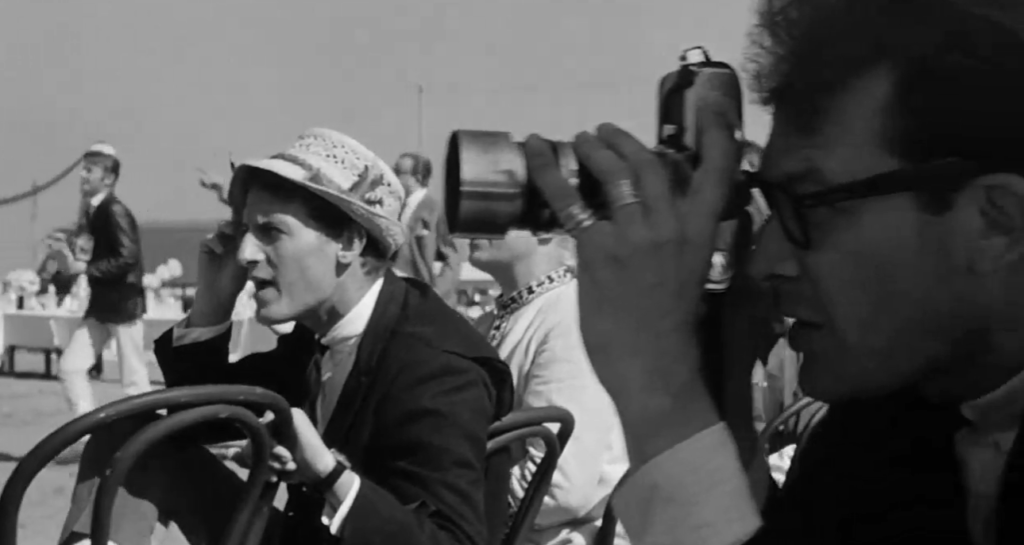
Watch for Barbara Steele as an inscrutable young American starlet in an early sequence:
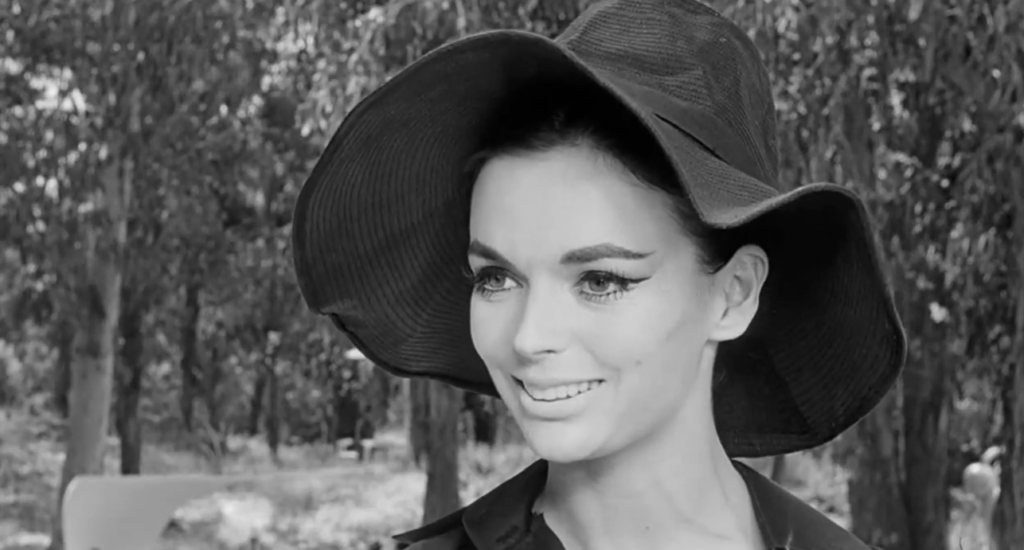
… and Claudia Cardinale — at both bookends of the film — starring as Fellini’s (er, Mastroianni’s) “Ideal Woman”.

Note: Not surprisingly, this film spawned a number of imitators, including Alex in Wonderland (1970), All That Jazz (1979), and Stardust Memories (1980).
Notable Performances, Qualities, and Moments:
- Marcello Mastroianni as Guido
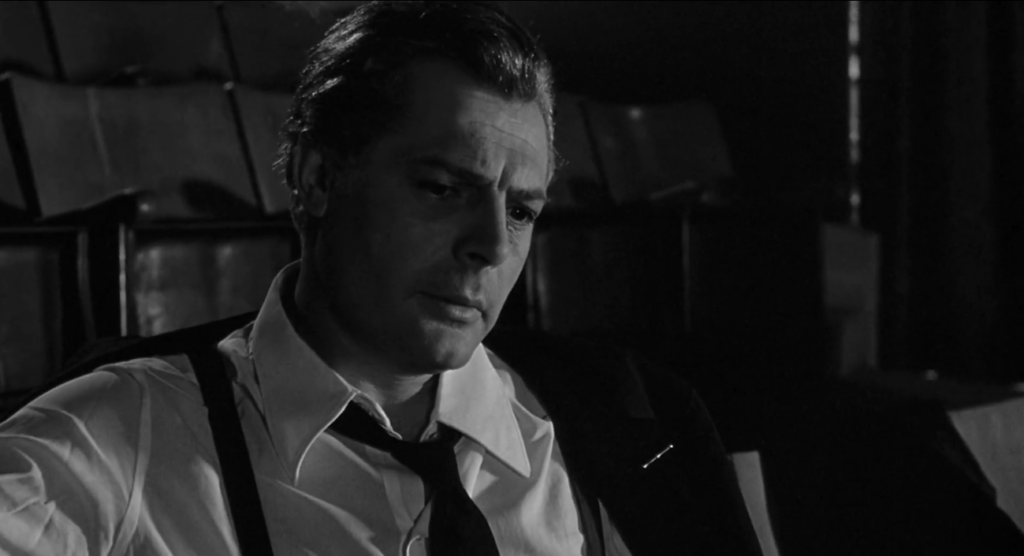
- Gianni Di Venanzo’s cinematography
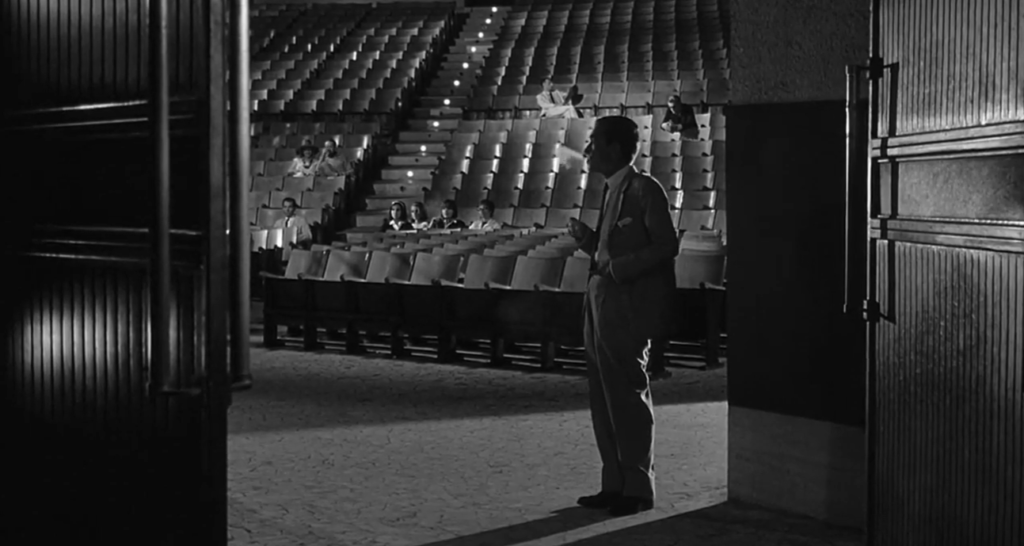 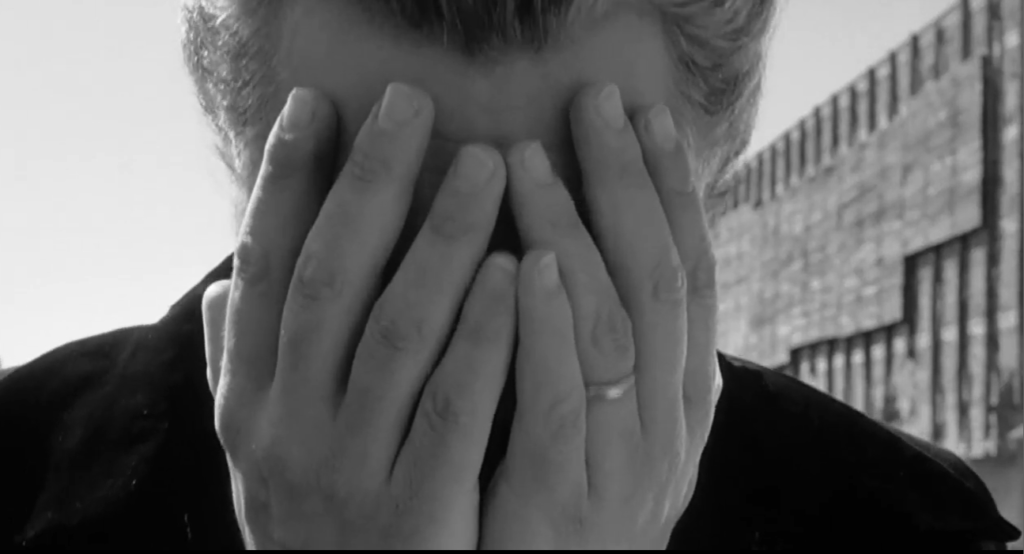
- Many memorable scenes and moments
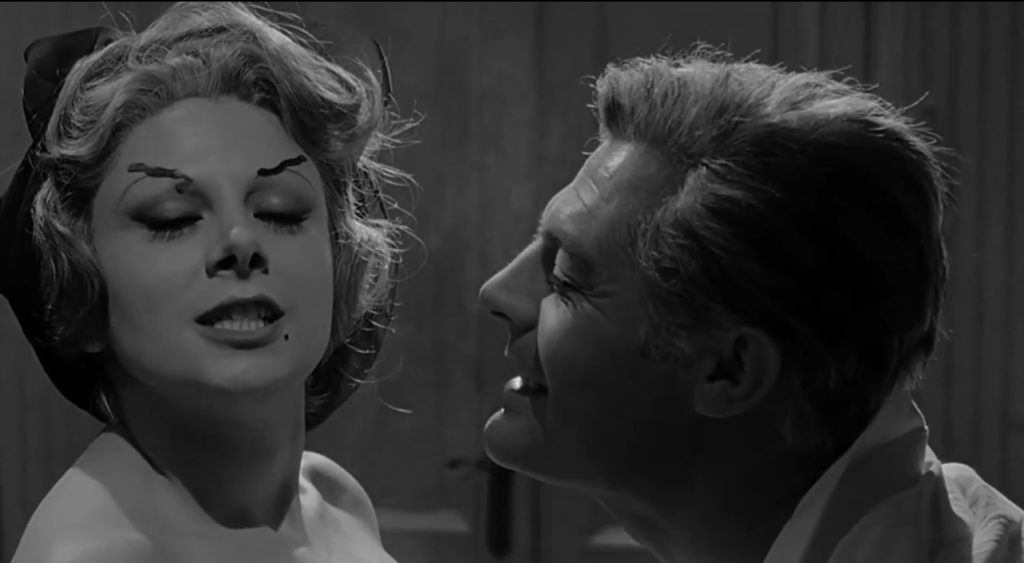 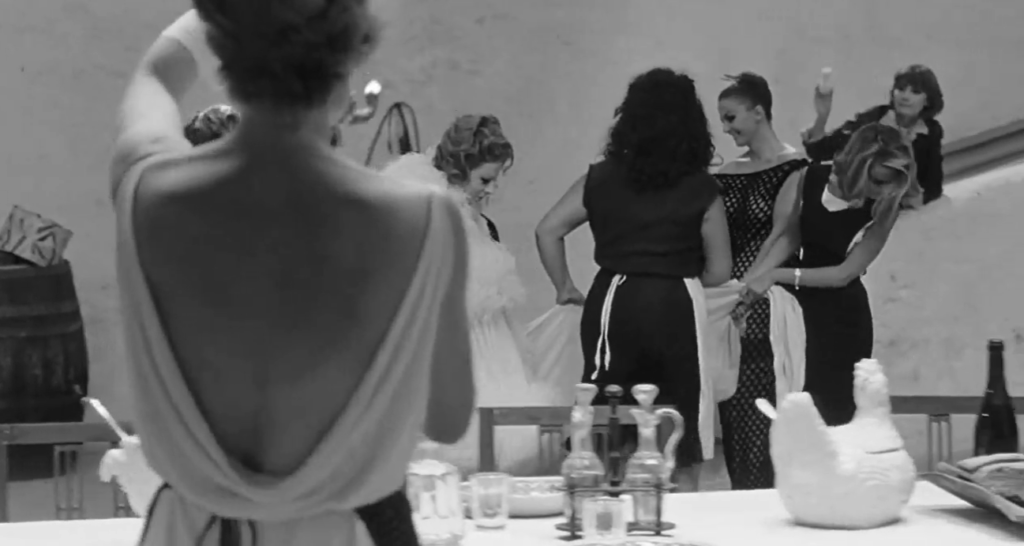
- Nino Rota’s score
Must See?
Yes, for sure. Listed as a film with Historical relevance, a Cult Movie, and a Personal Recommendation in the back of Peary’s book.
Categories
- Foreign Gem
- Historically Relevant
- Important Director
(Listed in 1001 Movies You Must See Before You Die)
Links:
|
